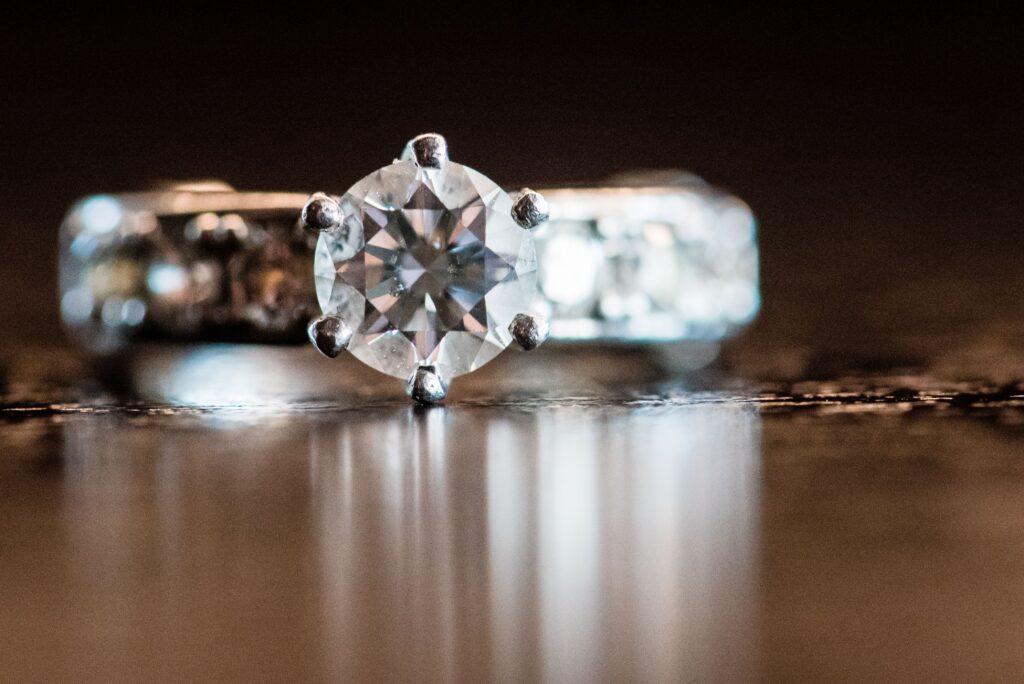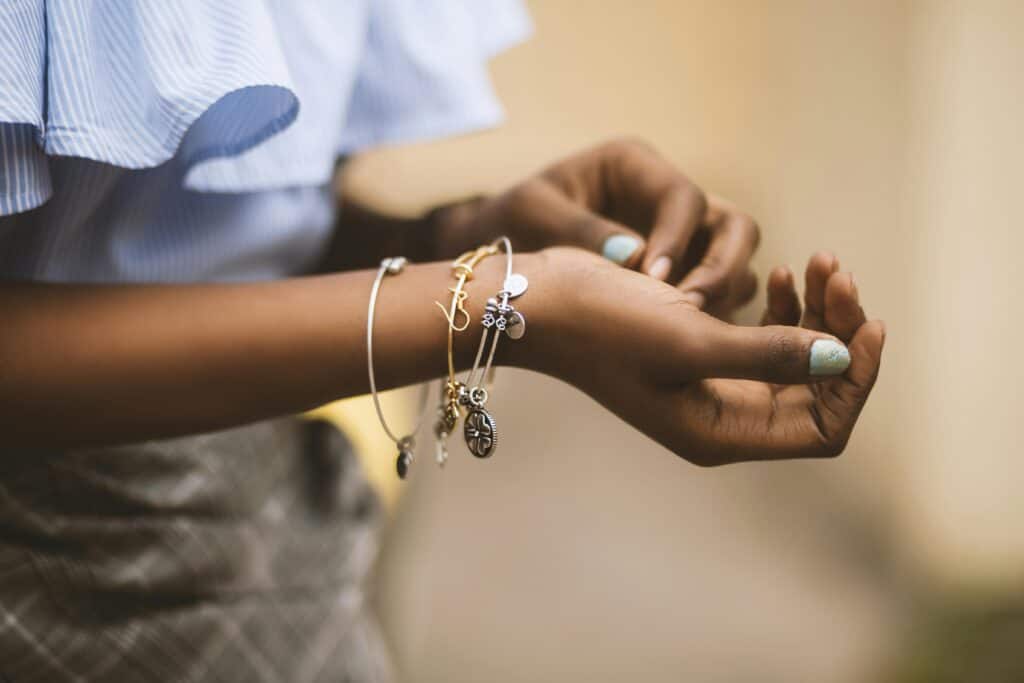When it comes to choosing a diamond, most people immediately think about the size or the carat weight. However, a truly dazzling diamond is not just about its size—it’s about its cut. The cut of a diamond is arguably the most crucial factor in determining its beauty and brilliance. It affects how light travels through the diamond, how it sparkles, and ultimately, how it catches the eye. In this blog post, we will explore the significance of diamond cuts, how they affect a diamond’s overall appearance, and why choosing the right cut is essential for your perfect piece of jewelry.
Understanding Diamond Cut: More Than Just Shape
Before diving into the different types of diamond cuts, it’s important to clarify that “cut” and “shape” are not the same things. The cut of a diamond refers to how well the diamond has been crafted from its rough form into its finished shape. This includes aspects like proportions, symmetry, and polish. On the other hand, the shape refers to the actual geometric outline of the diamond, such as round, princess, oval, etc.
The quality of a diamond’s cut is what defines its brilliance. When a diamond is cut to ideal proportions, like an Emerald cut, light is reflected and refracted within the diamond, maximizing its sparkle and fire. A poorly cut diamond, however, will appear dull and lifeless, regardless of its clarity, color, or carat weight. This makes the cut one of the most important considerations when selecting a diamond.
The Science Behind Diamond Cuts: What Makes a Diamond Sparkle?
The beauty of a diamond lies in its ability to reflect and refract light. A well-cut diamond will reflect light internally from one facet to another and then disperse it through the top of the diamond. This creates the diamond’s brilliance (white light reflection), fire (dispersion of light into various colors), and scintillation (the sparkle when a diamond moves). The key elements that determine a diamond’s cut quality include:
- Proportions: The relationship between the size, angle, and shape of each facet affects how light is reflected and refracted within the diamond.
- Symmetry: The precision of the diamond’s facets. Poor symmetry can lead to light leakage, reducing the diamond’s brilliance.
- Polish: The smoothness of the diamond’s surface. Well-polished diamonds have facets that allow light to pass through unobstructed, enhancing the diamond’s sparkle.
Types of Diamond Cuts: Classic to Modern
There are several diamond cuts, each offering a unique appeal and personality. Here’s a closer look at some of the most popular diamond cuts available today:
1. Round Brilliant Cut
The Round Brilliant cut is the most popular and sought-after diamond cut, accounting for nearly 75% of all diamonds sold. It is specifically designed to maximize brilliance, featuring 58 facets that are meticulously proportioned to reflect the most light. This cut has set the standard for all other diamond shapes and remains a timeless choice for engagement rings and fine jewelry.
2. Princess Cut
The Princess cut is a modern classic known for its square or rectangular shape with pointed corners. It combines the brilliance of a round cut with a contemporary square shape, making it a popular choice for those who want a traditional yet distinctive look. Princess-cut diamonds are versatile and can be used in various jewelry settings, from solitaire to halo and three-stone designs.
3. Cushion Cut
The Cushion cut, also known as the “pillow cut,” is recognized by its rounded corners and larger facets, which increase its brilliance and fire. This cut has an antique feel, reminiscent of vintage-style jewelry, yet it is experiencing a resurgence in popularity for its romantic and elegant appearance. Cushion cuts can vary between square and rectangular shapes, offering versatility for different ring settings.
4. Emerald Cut
The Emerald cut features a unique step-cut style, with parallel facets that create a “hall of mirrors” effect. This cut emphasizes the clarity of a diamond over its brilliance, resulting in a sophisticated and understated sparkle. Emerald-cut diamonds have an elongated, rectangular shape with truncated corners, making them ideal for those who appreciate a classic and elegant look.
5. Oval Cut
The Oval cut diamond offers the brilliance of a round cut but in an elongated shape that creates the illusion of a larger stone. The oval shape also has a slimming effect on the finger, making it a popular choice for engagement rings. Oval diamonds are perfect for those who want something unique while retaining the classic sparkle of a round brilliant cut.
6. Marquise Cut
The Marquise cut is known for its elongated shape with pointed ends, resembling a football or boat. This cut maximizes carat weight, giving the appearance of a larger diamond. Its long and narrow shape makes it a great choice for those who want to create the illusion of length on the finger.
7. Radiant Cut
Combining the elegance of the Emerald cut with the brilliance of the Round cut, the Radiant cut is a versatile choice that works well with a variety of settings. It has trimmed corners and a brilliant-cut facet pattern, making it ideal for those who desire a diamond with both brilliance and a unique shape.
Choosing the Right Diamond Cut for You
Choosing the right diamond cut is a personal decision that depends on several factors, including style preference, budget, and the diamond’s intended use. Here are some considerations to help you make the right choice:
- Personal Style: Your diamond should reflect your personal style. If you prefer a classic, timeless look, the Round Brilliant or Princess cut may be ideal. For a vintage-inspired style, consider the Cushion or Emerald cuts.
- Finger Shape and Size: The shape of the diamond can enhance the appearance of your hand. For example, elongated cuts like Oval, Marquise, and Emerald can make fingers appear longer and slimmer.
- Setting Style: Different diamond cuts work better with certain settings. For example, a solitaire setting can highlight the brilliance of a Round or Princess cut, while a halo setting can enhance the size and sparkle of a Cushion or Radiant cut.
- Budget Considerations: The cut of a diamond can affect its price. Round Brilliant cuts are typically more expensive due to their popularity and the amount of rough diamond wasted in the cutting process. If you’re on a budget, consider other shapes like Cushion or Radiant cuts, which offer great brilliance at a lower cost.
The significance of diamond cuts goes far beyond their shapes; they define how well a diamond interacts with light and, ultimately, how beautiful it appears. When choosing a diamond, remember that the cut is the most critical factor influencing its brilliance, fire, and scintillation. Whether you are drawn to the timeless allure of a Round Brilliant cut or the vintage charm of a Cushion cut, understanding the significance of diamond cuts will help you make a more informed decision and select a diamond that truly reflects your style and preferences. At Fergus James, we offer a wide range of expertly cut diamonds, ensuring that your chosen piece sparkles with unmatched brilliance and beauty.





